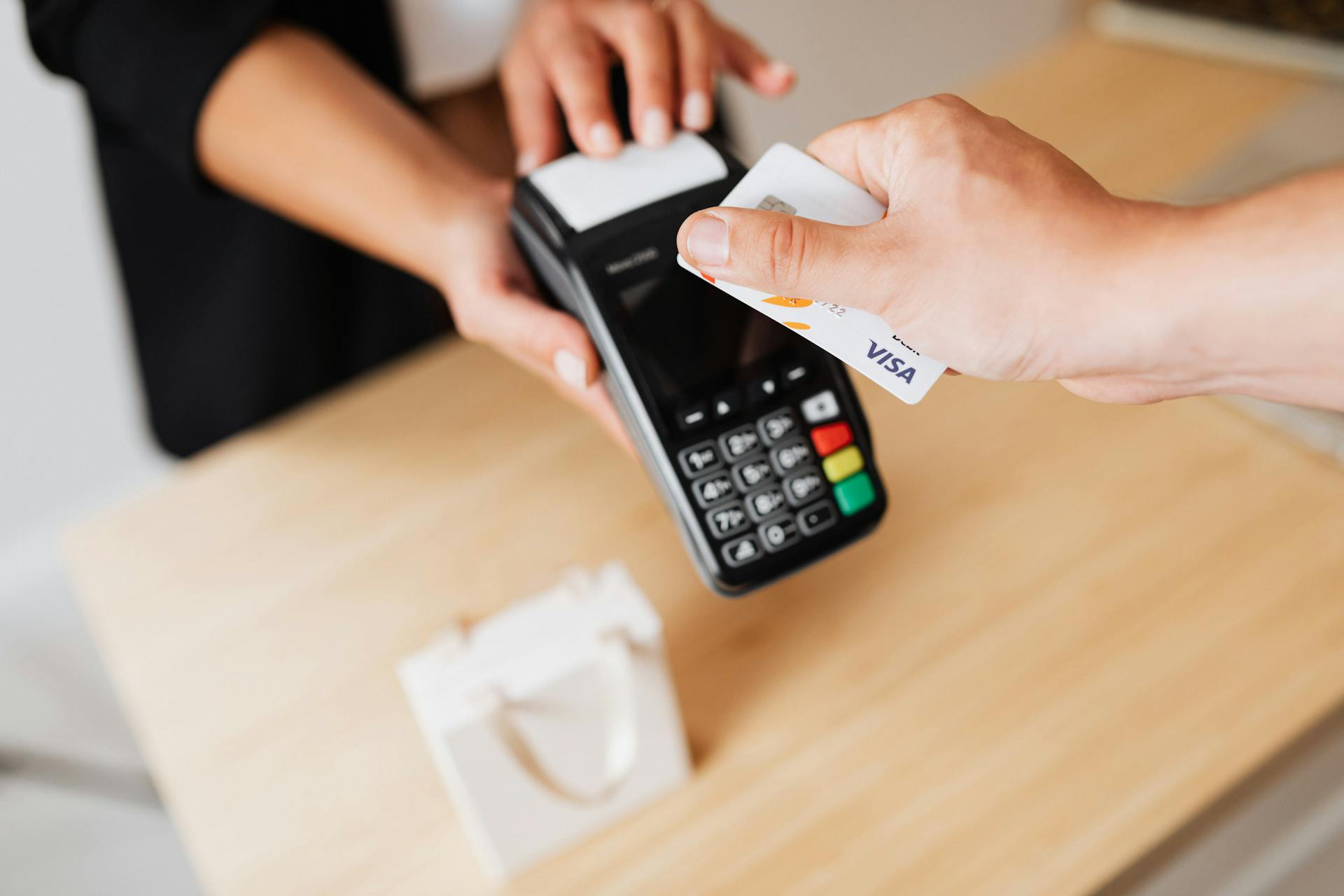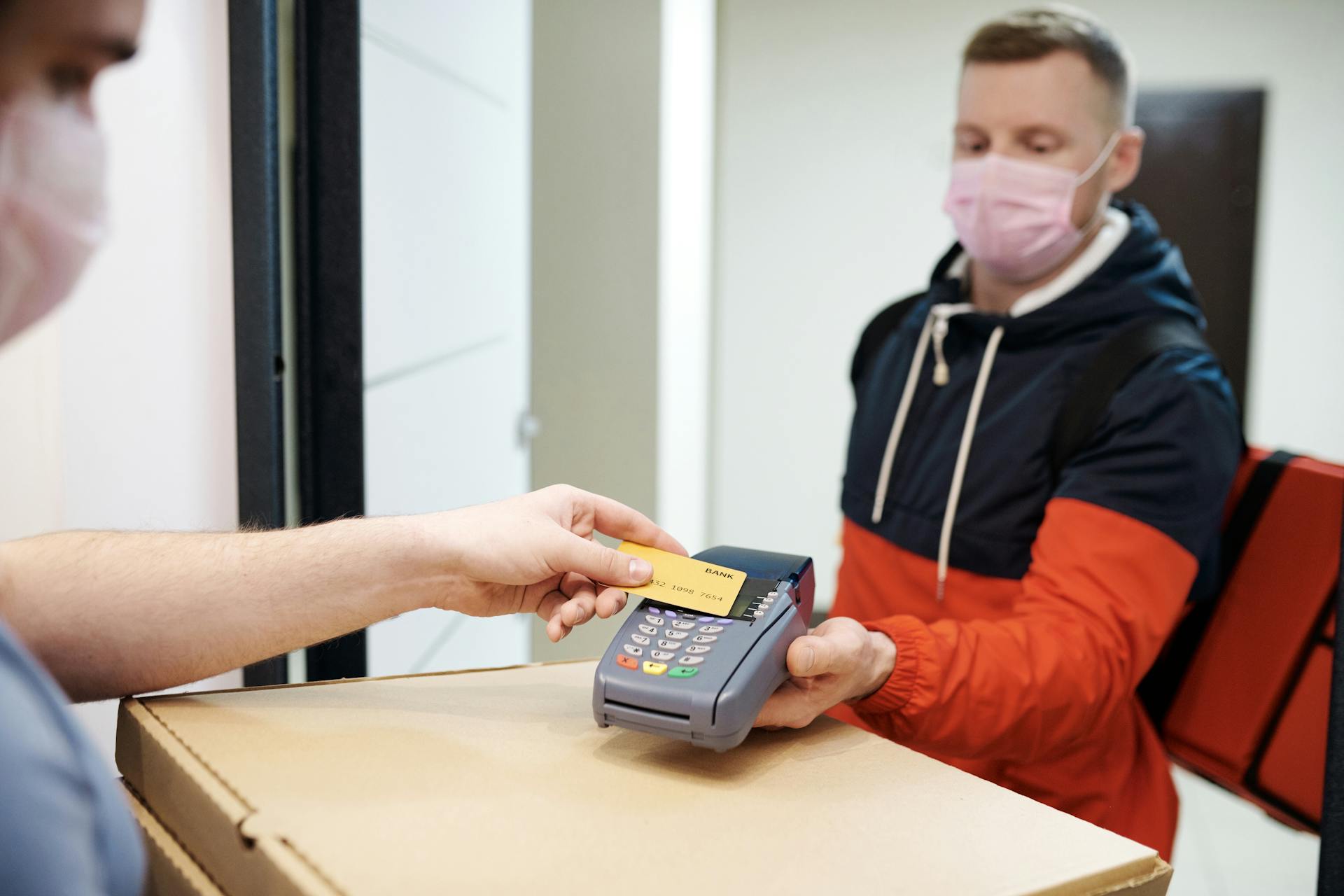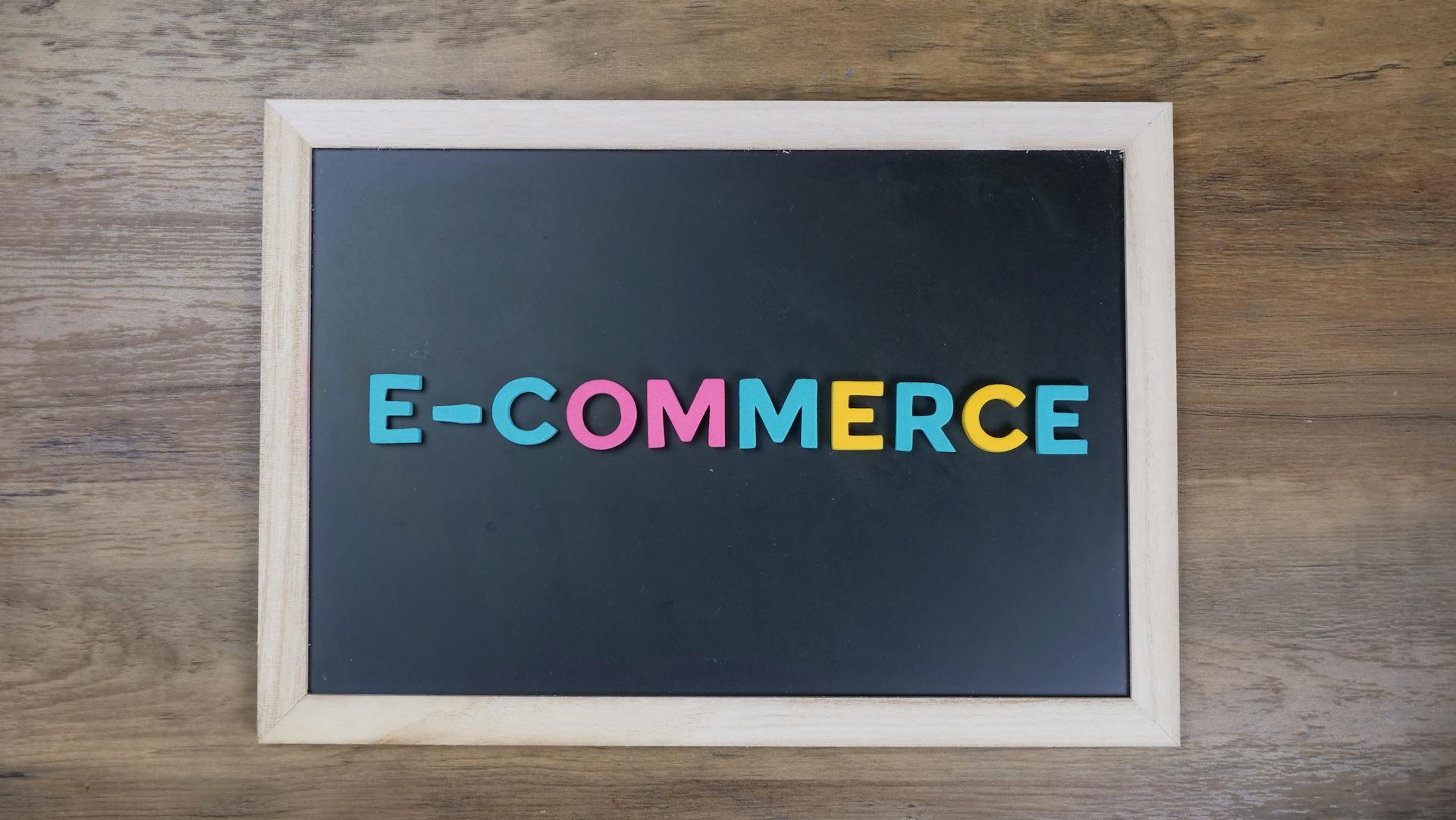
To sell on Amazon, you'll need to pay a few fees, but don't worry, they're not too bad. Amazon charges a selling fee, which is a percentage of the sale price of each item.
You'll also need to pay a shipping fee, which varies depending on the shipping speed and weight of the item. This fee can range from $2.41 to $4.49 per unit.
As a seller, you're also responsible for paying the cost of shipping to Amazon's warehouses. This can be a significant expense, especially if you're selling large or heavy items.
Cost to Start and Operate
To start selling on Amazon, you'll need to pay for an Amazon account, which costs either $0.99 per item sold with the Individual plan or $39.99 with the Professional Seller Account.
The Professional Seller Account is more economically efficient if you plan to sell more than 40 units per month.
You'll also need to consider other costs associated with selling on Amazon, such as outsourcing, hiring support staff, and promoting on a wider scale, which vary from person to person.
For another approach, see: Amazon Pay per Click Account Management
The two main options for fulfillment are Fulfillment by Merchant (FBM) and Fulfillment by Amazon (FBA), which have different costs and requirements.
Here are the main costs to consider when selling on Amazon:
Regularly monitoring fees and adjusting pricing strategies can help minimize Amazon seller fees, which include referral and closing fees, storage fees, removal fees, and advertising expenses.
Account Types and Fees
To sell on Amazon, you'll need to choose between an Individual Seller account and a Professional Seller account. The main difference between the two is that Individual Seller accounts have no monthly fees, but charge 99 cents per item sold, with a limit of 40 items per month.
Individual Seller accounts are ideal for occasional and low-volume sellers, but come with more restrictions compared to Professional Seller accounts, such as not being able to apply to sell products that require approval or use Amazon Ads to improve visibility.
Professional Seller accounts, on the other hand, have a $39.99 monthly fee, but offer features like unlimited product listings, advanced selling tools, and bulk product uploads. They also have access to more optional paid programs, including Amazon Ads and Lightning and 7-Day Deals.
Here's a breakdown of the two account types:
Monthly Subscription Fee
If you're planning to sell on Amazon, it's essential to understand the monthly subscription fees associated with each account type. The Professional Seller account, designed for businesses and high-volume sellers, costs $39.99 per month.
This fee is a fixed cost that needs to be offset by sufficient sales volume to ensure it doesn't lead to reduced profitability. The monthly subscription fee is just one of the financial factors to consider when selling on Amazon.
For individual sellers with less than 40 orders fulfilled each month, Amazon charges a listing fee of $0.99 per product sold, but no subscription fees are required. This can be a more cost-effective option for small sellers just getting started.
The Professional Seller plan is geared towards companies selling more than 40 items per month, making it a better choice for larger businesses. This plan also offers features like bulk product uploads and inventory management, which can be beneficial for high-volume sellers.
Here's a comparison of the monthly subscription fees for different Amazon account types:
Keep in mind that these fees are subject to change, so it's essential to review Amazon's pricing structure regularly to ensure you're aware of any updates.
FBM
FBM is a fulfillment method where you, as the seller, are responsible for storing, packaging, and shipping your products.
Amazon doesn't charge a shipping or fulfillment fee for FBM, which can be a significant cost savings.
However, you'll need to personally handle storage costs, such as rent for a storage space, as well as packaging materials like boxes and tape.
You'll also be responsible for shipping costs, including postage, and potentially hiring employees to help with these tasks.
Without the Prime badge, your products won't perform as well on the platform, which can impact sales.
The FBM method is most suitable for small businesses or those just starting out, as it can be more cost-effective in the early stages.
Calculating and Understanding Fees
Amazon's fees can be complex, but they're essential to grasp for effective pricing and profit management. Referral fees, for example, are a percentage of the total sales price, varying by product category.
For instance, electronics might have a lower referral fee percentage than luxury items. Here's a summary of the referral fee rates across major Amazon categories as of 2023:
Referral fees can range broadly, with a minimum fee of 30 cents for certain categories. You'll pay either the minimum referral fee or the specific referral fee percentage for that product category – whichever is higher.
Calculating Product Fees
Calculating product fees on Amazon can be complex, but understanding the key factors will help you make informed decisions. To start, you need to consider your product's category, as referral fees vary across categories.
Referral fees are a percentage of the total sales price, including shipping or gift wrap charges. The percentage varies by product category, ranging from 8% to 45%. For example, jewelry items may have a higher percentage fee compared to home goods.
Amazon provides a Fee Calculator Tool to estimate fees before listing products. You can also monitor your fees in your seller account's payments section. Key factors influencing fees include the product category, shipping options, and the type of fulfillment service chosen.
The type of fulfillment service chosen can also impact your fees. If you opt for Fulfillment by Amazon (FBA), fees are based on the physical characteristics of the product, including size and weight. FBA fees typically increase for larger and heavier products.
Here's a summary of referral fee rates across major Amazon categories as of 2023:
These fees are crucial to understand for effective pricing and profit management.
Is Cost-Per-Unit Based on Sold or Stocked Units?
The cost-per-unit for FBA is based on units stocked, not units sold. This means you'll be charged for the storage fees even if your items don't sell during the month.
If your items sit unsold for too long, FBA will tack on additional fees for aging stock. This is on top of the regular storage fees you're already paying.
Your pick-pack-ship fees, on the other hand, are assessed only as items sell and orders ship. This means you won't pay these fees unless you're actually fulfilling orders.
Strategies to Minimize Fees
To minimize fees on Amazon, you need to optimize your listings for higher conversion rates. This involves selecting the right fulfillment options, reducing returns and cancellations, and regularly monitoring fees to adjust pricing strategies.
Participating in the FBA program can lead to lower fulfillment fees compared to self-fulfillment and improve product visibility, potentially increasing sales without proportionally increasing fees. This is especially true for products with consistent sales patterns.
Optimizing product listings also involves practices such as bundling products together, which can attract more customers and increase sales while reducing the per-item selling fees. Targeting higher price points where feasible can help absorb the impact of fees better, as the percentage taken by Amazon remains constant.
Bulk shipping and inventory management are particularly crucial for Fulfillment by Merchant (FBM) sellers, as it can significantly cut down on shipping costs and storage expenses. By shipping products in bulk and efficiently managing inventory, sellers can streamline operations and reduce overhead costs.
Amazon charges sellers a referral fee that ranges from 8% to 45%, depending on the item category, with most products having a 15% referral fee. This fee should be factored into your pricing strategy to ensure profitability.
Regularly monitoring fees and adjusting pricing strategies can also help minimize fees, as can optimizing product listings and managing shipping and inventory efficiently. By making the most out of every sale and operation, sellers can ensure that the fees paid to Amazon bring maximum return in terms of sales efficiency and profitability.
Pricing and Financial Implications
Selling on Amazon comes with various fees that can eat into your profit margins. Amazon's referral fees, for example, can range from 8% to 15% of the sale price, depending on the product category.
To give you a better idea, let's break down the costs. The Individual Seller Account costs $0.99 per item sold, while the Professional Seller Account has a fixed rate of $39.99 per month. If you plan to sell more than 40 units per month, it's more economical to switch to the Professional plan.
Here are the two Amazon account options to consider:
Keep in mind that these costs are just the tip of the iceberg. Additional fees, such as storage fees, removal fees, and advertising expenses, can also eat into your profits.
Financial Implications
Amazon seller fees can significantly affect your profit margins. For low-margin products, high fees may hinder profitability, while high-margin products can absorb fees more effectively. It's essential to incorporate fee impacts into your pricing strategy.
For example, selling electronics often incurs higher fees compared to clothing items. Choosing the appropriate seller account type and understanding fee structures can aid in making informed decisions about product selection and pricing.
Understanding the financial implications of Amazon selling fees is vital for sellers as it directly affects their profit margins and overall business health. These fees, including referral, fulfillment, and additional charges, can significantly reduce the profit per item sold.
Amazon's referral fees can range from 8% to 15% of the sale price, depending on the product category. For example, higher referral fees in certain categories like jewelry can noticeably decrease the profitability of each sale.
Fulfillment fees, particularly for large or heavy items using Amazon's FBA service, can also cut into profit margins. These fees can range from $2.41 to $5.55 per unit, depending on the weight and dimensions of the item.
Here's a breakdown of the different Amazon seller fees you need to consider:
By understanding these fees and incorporating them into your pricing strategy, you can make informed decisions about product selection and pricing to ensure profitability.
Advertising Costs
Advertising on Amazon is less expensive than other platforms, with an average cost per click of around $0.35.
However, it's worth noting that advertising campaigns on Amazon will require a lot of testing to find what works best with your audience.
Here's an interesting read: How Much Does Amazon Pay for Advertising
Amazon Selling Policies and Fees
Amazon has a minimum referral fee of 30 cents per item, but it can be higher if the item falls under a specific product category, which can range from 8% to 45% of the selling price.
Additionally, media items like books and DVDs incur a closing fee of $1.80 on top of the referral fee.
As an Amazon seller, you'll be responsible for covering costs for customer returns, which can be a common occurrence.
Fee Variations by Category
Amazon's fees vary significantly across different product categories, making it essential for sellers to understand these variations.
Books, Music, Video, and Home, Garden & Tools have a referral fee rate of 15%.
Electronics, Computers, and Musical Instruments have a referral fee rate of 8%, but Musical Instruments have a tiered system.
Jewelry has a referral fee rate of 20%, while Automotive & Industrial, Watches, and Clothing & Shoes have rates of 12% and 15-20% respectively.
Toys & Baby, Furniture, and Video Games have a referral fee rate of 15%.
Food & Beverage, Beauty, Health and Personal Care have a referral fee rate of 15%, but with a unique structure in the Beauty, Health and Personal Care category.
Here's a summary of the referral fee rates across major Amazon categories as of 2023:
- Books, Music, Video: 15%
- Automotive & Industrial: 12%
- Electronics: 8%
- Computers: 8%
- Home, Garden & Tools: 15%
- Jewelry: 20%
- Watches: 12%
- Clothing & Shoes: 15-20%
- Sports & Outdoors: 15%
- Toys & Baby: 15%
- Furniture: 15%
- Food & Beverage: 15%
- Musical Instruments: 8-15% (tiered)
- Video Games: 15%
Customer Returns
As an Amazon seller, you'll want to be aware of the fees associated with customer returns. Customer Returns Fees can be a significant cost.
If a customer orders one of your products only to return it later, you'll be responsible for covering the costs of the returned item.
The costs of customer returns can add up quickly, so it's essential to factor them into your pricing strategy.
Choosing the Right Plan and Account
Amazon offers two primary selling plans: the Individual Plan and the Professional Plan. The Individual Plan has no monthly fees, but charges a higher referral fee per item, making it suitable for sellers with low sales volumes.
You can sign up for an Individual Seller account with no up-front costs, and it's a good option for occasional and low-volume sellers. However, it comes with a 99-cent fee per item sold, and you can only sell up to 40 items per month.
The Professional Plan, on the other hand, charges a monthly fee of $39.99, but offers lower referral fees and additional features like advertising tools and bulk inventory uploads. It's ideal for high-volume sellers and provides many volume-selling features.
Here's a quick comparison of the two plans:
Ultimately, your choice between the two plans depends on your monthly sales volume and product type. If you're serious about selling on Amazon, the Professional Plan is likely the better option.
Individual Accounts

Individual accounts on Amazon are perfect for those who want to dip their toes into selling without committing to a monthly fee. There's no monthly fee for an Individual Seller account, but you will be charged 99 cents per item sold.
These accounts are ideal for low-volume sellers who only need to sell a few items per month. You can sell up to 40 items per month on an Individual Seller account.
If you're an occasional seller, an Individual Seller account is a great choice since it has no up-front costs. You won't pay a dime out of pocket, as Amazon takes its cut from your payout.
However, keep in mind that Individual Seller accounts come with some restrictions. You can't apply to sell products that require approval, and you also can't use Amazon Ads to improve visibility.
Here's a quick rundown of the key differences between Individual and Professional Seller accounts:
If you're just getting started on Amazon, an Individual Seller account is a great way to test the waters without breaking the bank.
Selecting the Right Plan
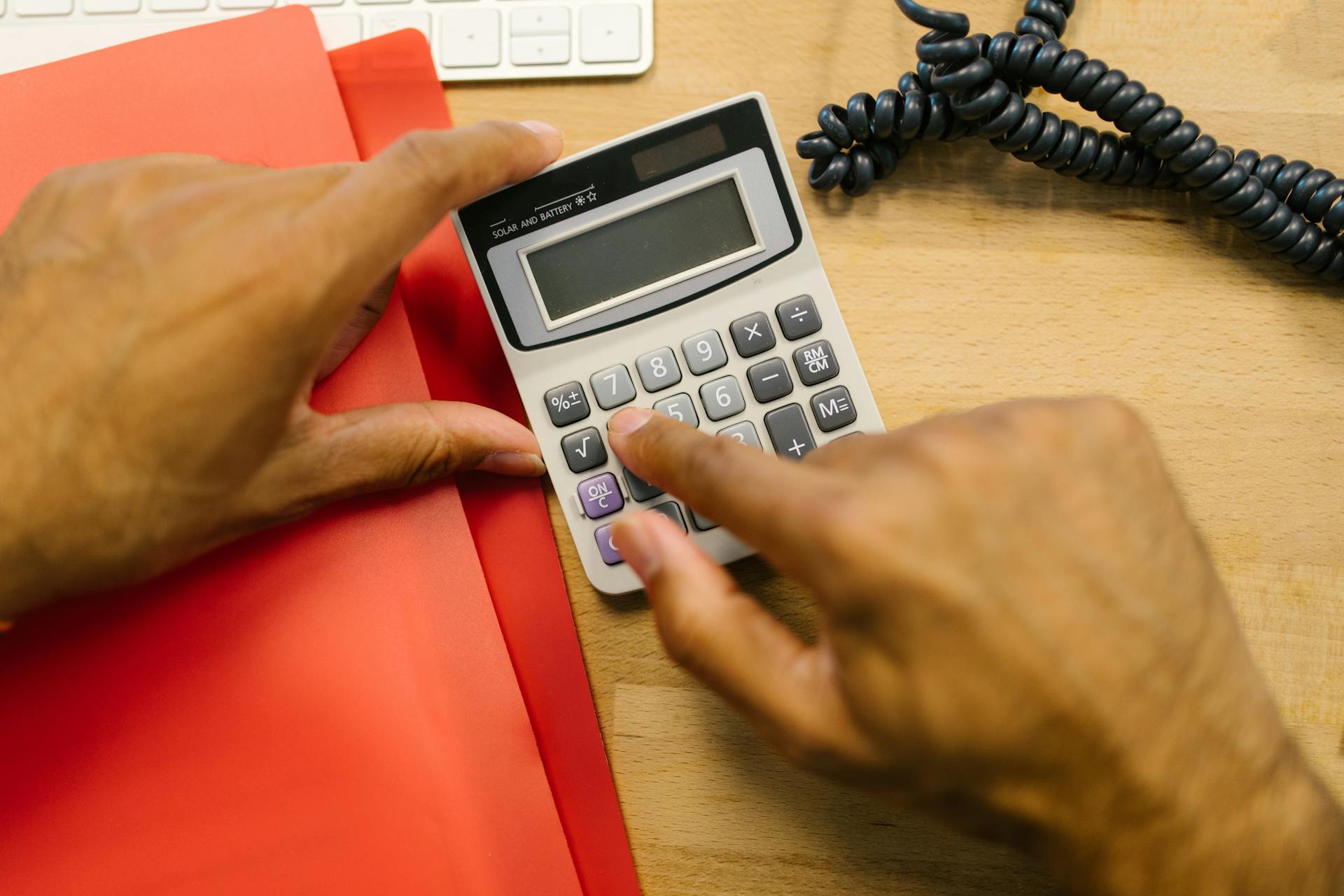
If you're serious about selling on Amazon, you'll want to choose the right plan for your business. The Individual Plan is suitable for sellers with low sales volumes, while the Professional Plan is ideal for high-volume sellers.
The Individual Plan has no monthly fees, but you'll pay a 99-cent fee per item sold, and you can only sell up to 40 items per month. This plan also comes with more restrictions compared to the Professional Plan.
The Professional Plan charges a monthly fee of $39.99, but it offers lower referral fees and additional features like advertising tools and bulk inventory uploads. You'll also have the ability to set dynamic pricing and your own shipping fees.
Here's a summary of the two plans:
Ultimately, the choice between the Individual and Professional Plans depends on your business's needs and sales volume. If you're just starting out or have low sales volume, the Individual Plan might be the way to go. But if you're a high-volume seller, the Professional Plan will likely save you money in the long run.
SFP
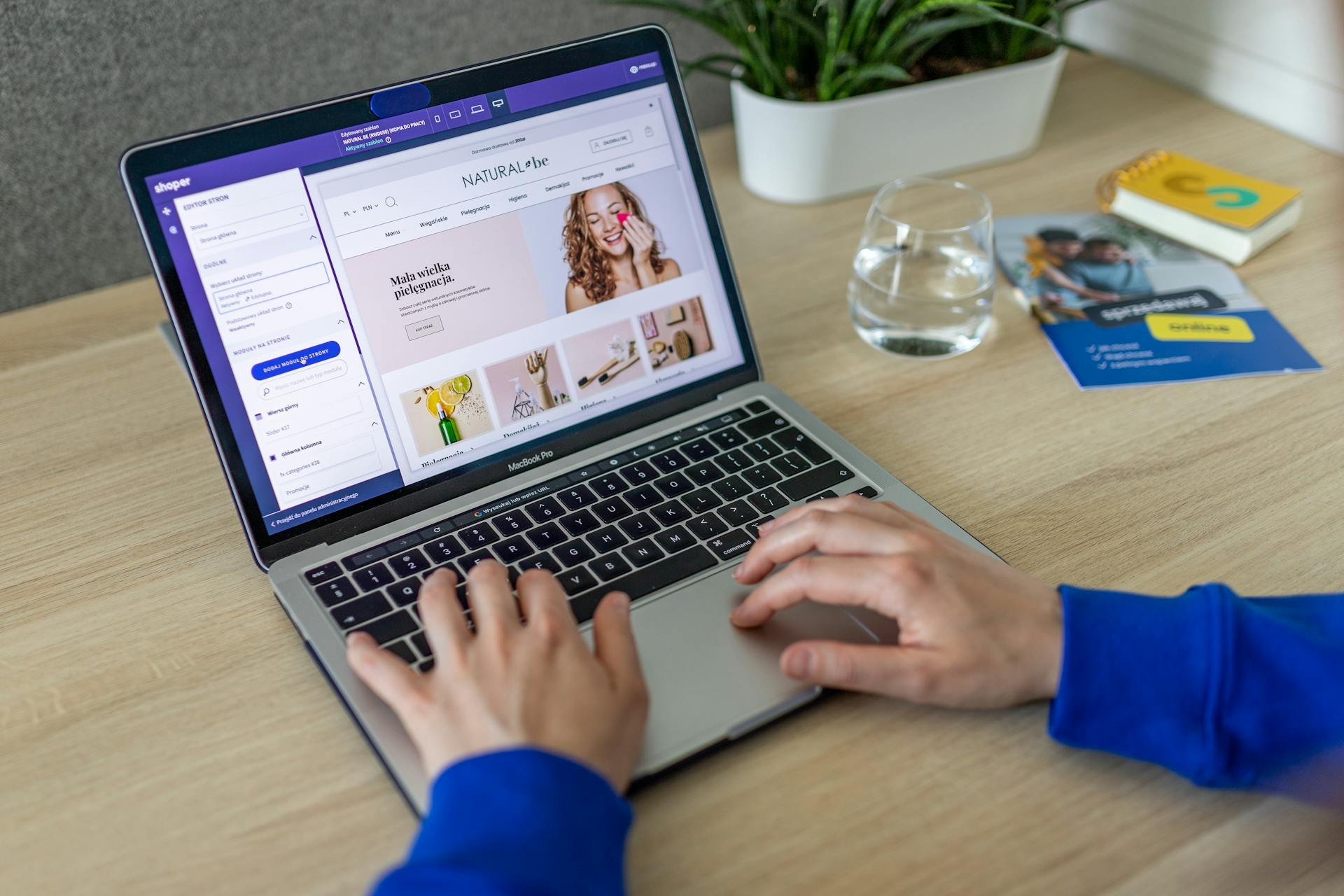
SFP is a great option for sellers who want to take advantage of Amazon Prime's benefits without losing control of their fulfillment process. You'll handle storage, packing, and shipping on your own, just like in FBM.
Amazon charges a 2% fee for each SFP order, which can add up quickly. This fee falls on top of your fulfillment and shipping expenses, as well as your Amazon fees.
Items with the Prime badge get 17% more traffic and are 30% more likely to be bought compared to items without the badge. That's a significant boost in sales.
To participate in SFP, you'll need to meet Amazon's requirements, which include offering free one-day and two-day delivery for Prime members, free standard shipping for all customers, and free returns on items under 50 lbs.
Here are the key performance requirements for SFP sellers:
- Deliver items on time at least 93.5% of the time
- A valid tracking rate (percentage of orders with a valid tracking number) of at least 99%
- A cancellation rate of 0.5% or less
By meeting these requirements, you'll be able to take advantage of the Prime badge and attract more customers to your products.
Fees and Costs Explained
To sell on Amazon, you'll need to pay for an account, which costs either $0.99 per item sold for an Individual Seller Account or a fixed rate of $39.99 for a Professional Seller Account. Once you start selling more than 40 units per month, it's more economically efficient to switch to the Professional Seller Account.
Amazon charges sellers a referral fee that ranges from 8% to 45%, depending on the item category, with most products having a 15% referral fee. Electronics and computers have an 8% referral fee, while Amazon Device Accessories have a 45% referral fee.
For Fulfillment by Merchant (FBM) sellers, you'll need to consider additional costs such as storage fees, removal fees, and advertising expenses. Shipping products to Amazon's fulfillment centers (if using FBA) and managing returns also incur costs.
The monthly subscription fee for professional sellers is another financial factor to consider, which needs to be offset by sufficient sales volume to ensure it doesn't lead to reduced profitability. Failing to incorporate these fees accurately can lead to setting prices too low, resulting in revenue losses, or too high, which might decrease competitiveness and sales.
Worth a look: Amazon Sell Delta 8
To calculate the exact amount you'll be paying in fees whenever you sell an item on Amazon, you can follow these steps: keep your item in mind and go through the steps to figure out how much you'll be paying in fees for selling or storing that item.
Here's a summary of the referral fee rates across major Amazon categories as of 2023:
Amazon fee calculators and other tools are available to help estimate and strategize around these costs, providing a clear picture of potential costs associated with selling a product on Amazon.
Closing
Selling on Amazon comes with some fees, and one of them is the closing fee. This fee is a flat $1.80 charge that's added to the referral fees for items in media categories like books, DVDs, music, software items, and video items.
The closing fee used to be charged as a percentage of the sale price, but Amazon changed it to a flat rate. Some sellers still refer to it as a "variable closing fee", likely because of the old way it was charged.
If you're planning to sell on Amazon, you should know that the closing fee applies to all media categories, which is a pretty broad range of products.
Frequently Asked Questions
Can you be an Amazon seller for free?
Yes, creating an individual Amazon seller account is completely free, requiring only basic information to get started. You can list your products on Amazon without any upfront costs.
Sources
- https://foundr.com/articles/building-a-business/ecommerce/selling-on-amazon
- https://shipscience.com/do-you-have-to-pay-to-sell-on-amazon-a-guide-to-amazon-seller-fees-2/
- https://pattern.com/blog/how-much-does-it-cost-to-sell-on-amazon
- https://fitsmallbusiness.com/amazon-seller-fees/
- https://blog.lengow.com/amazon-marketplace/amazon-selling-fees
Featured Images: pexels.com

